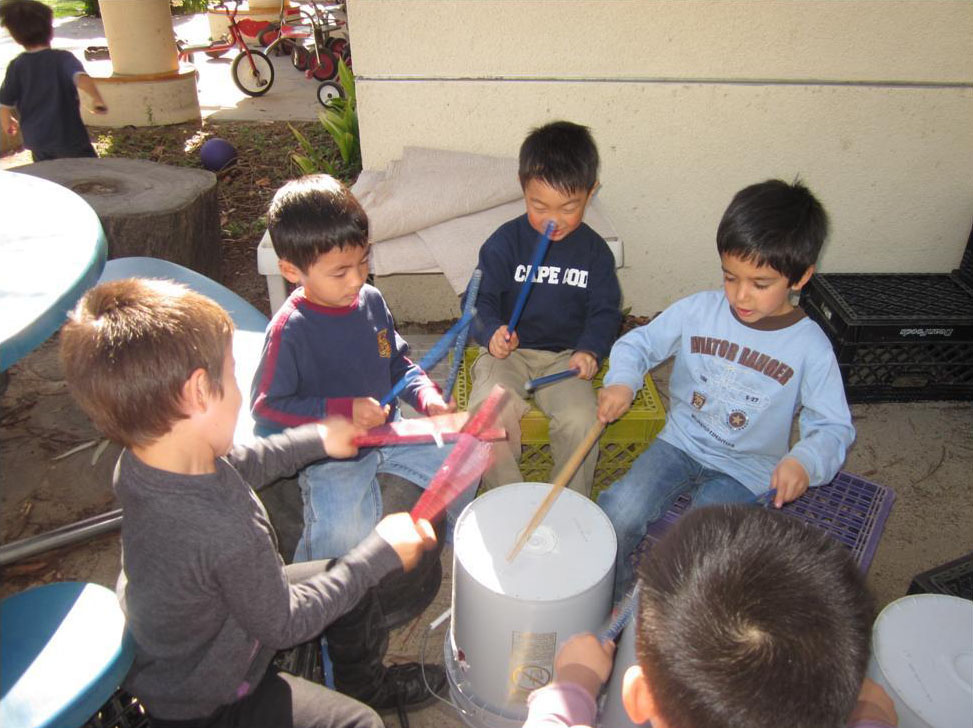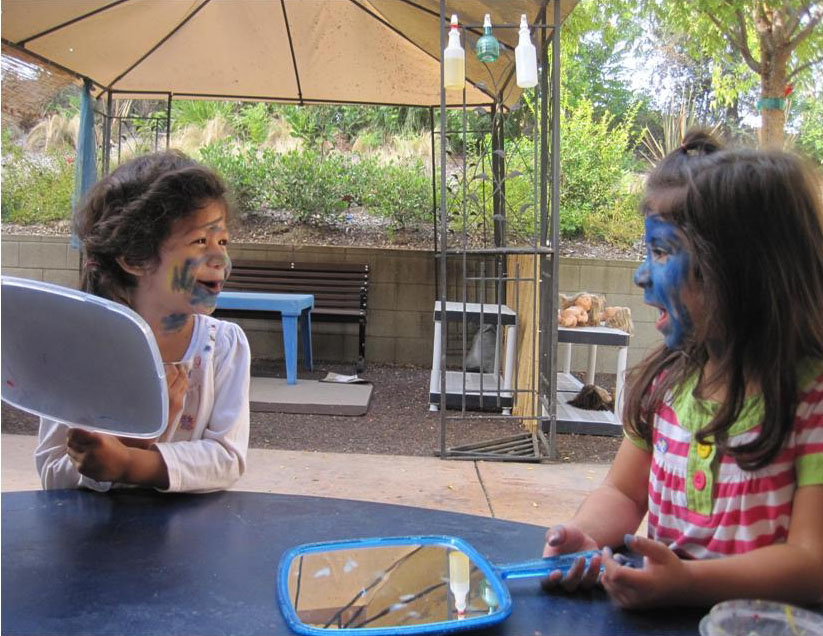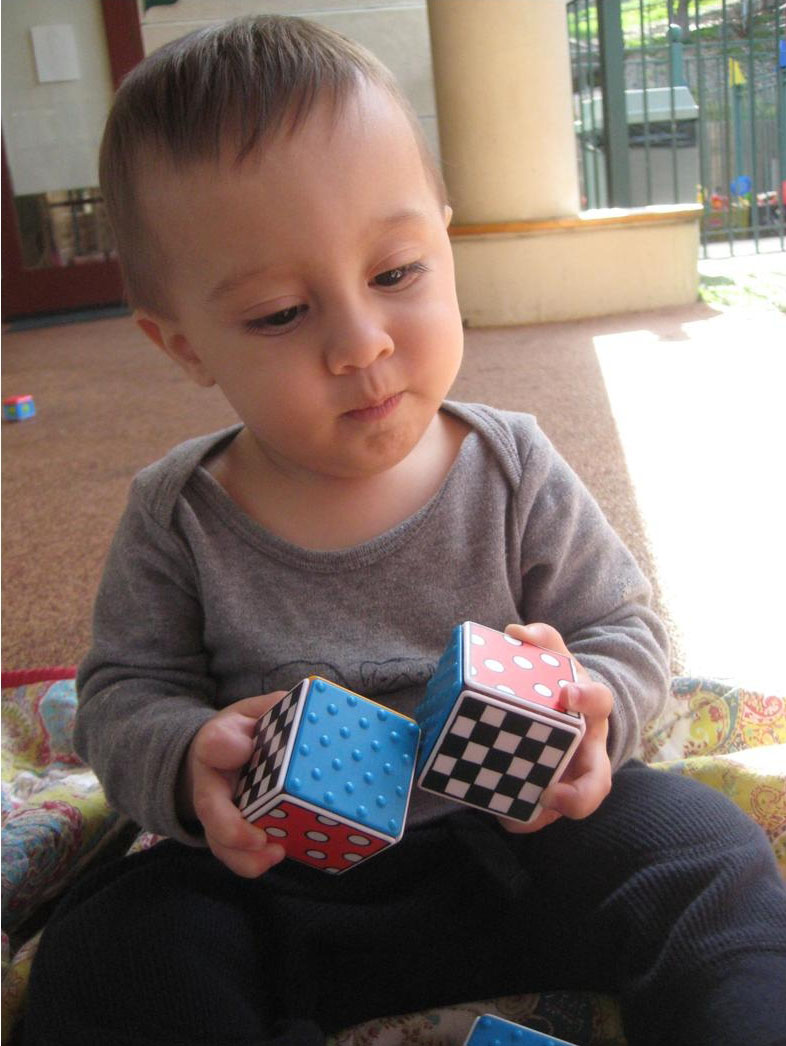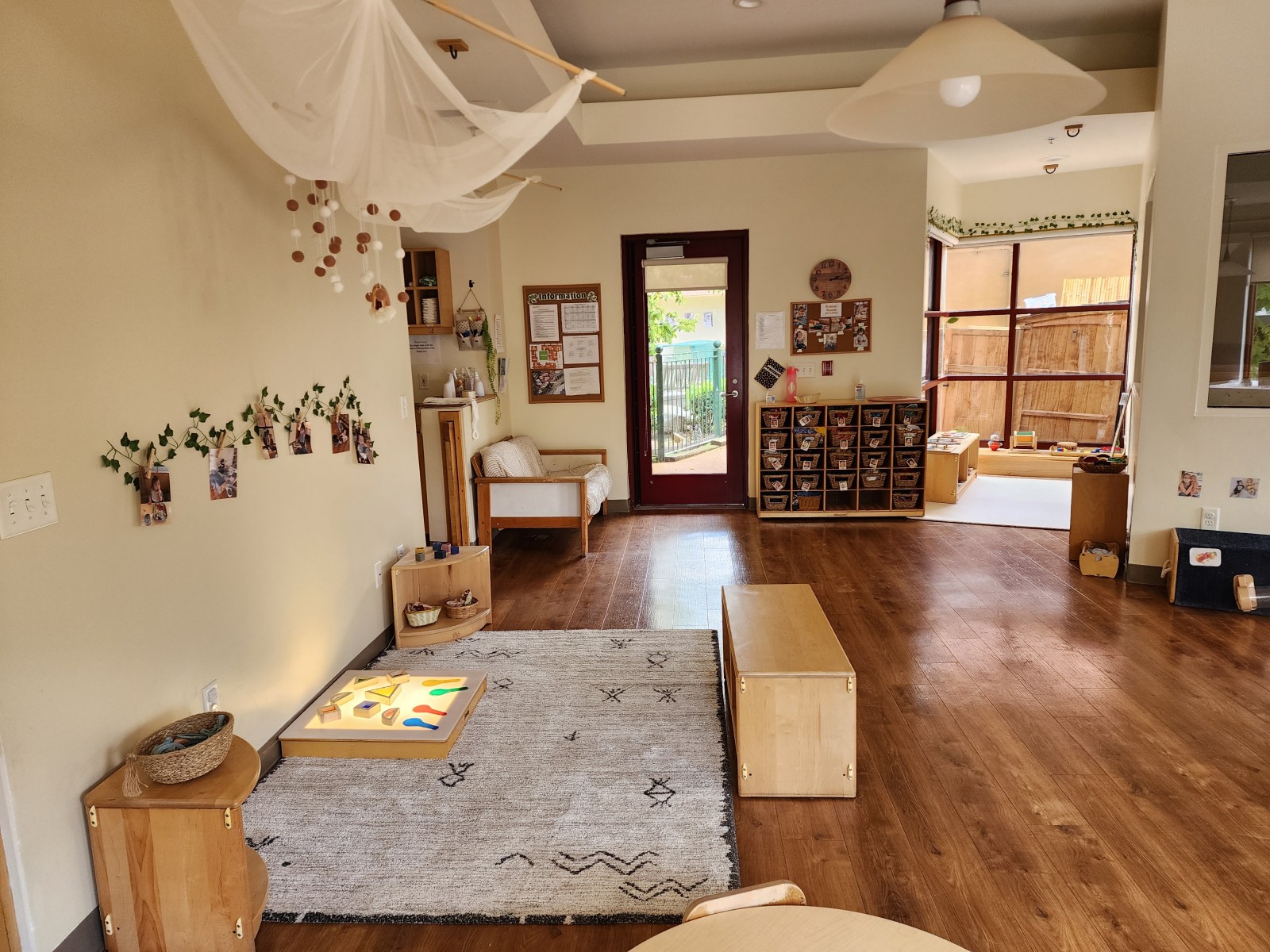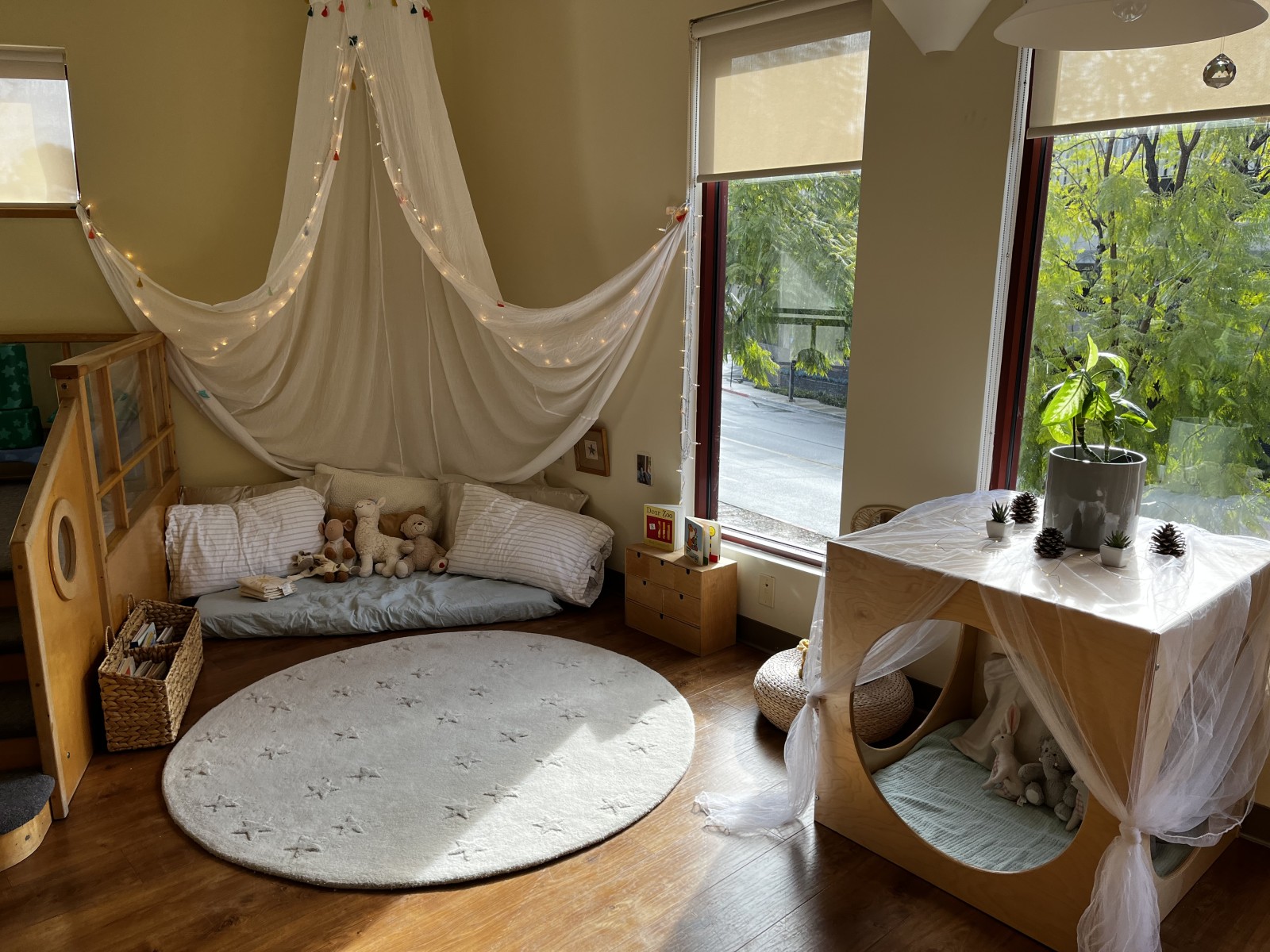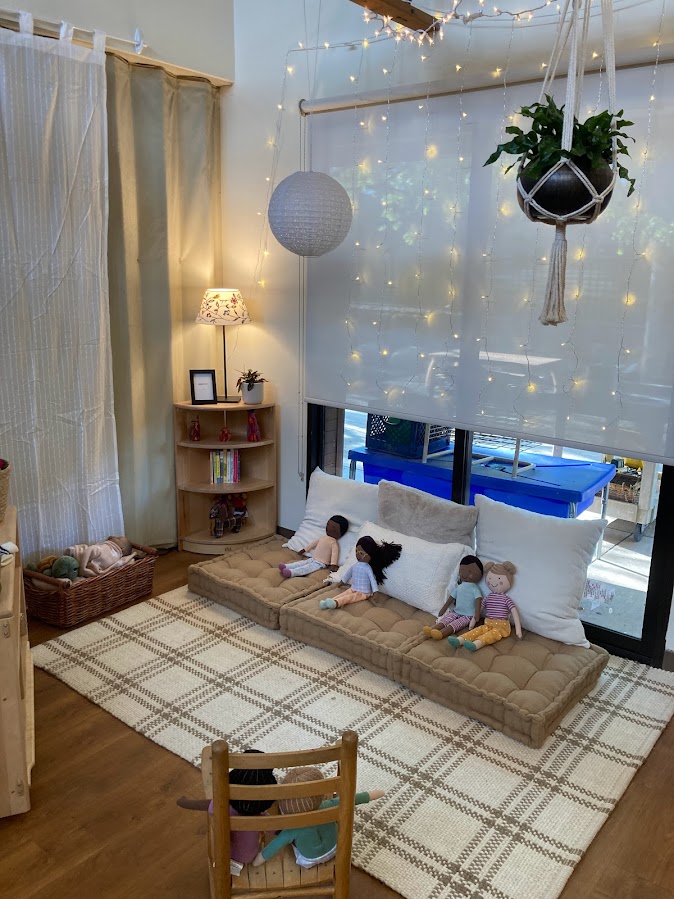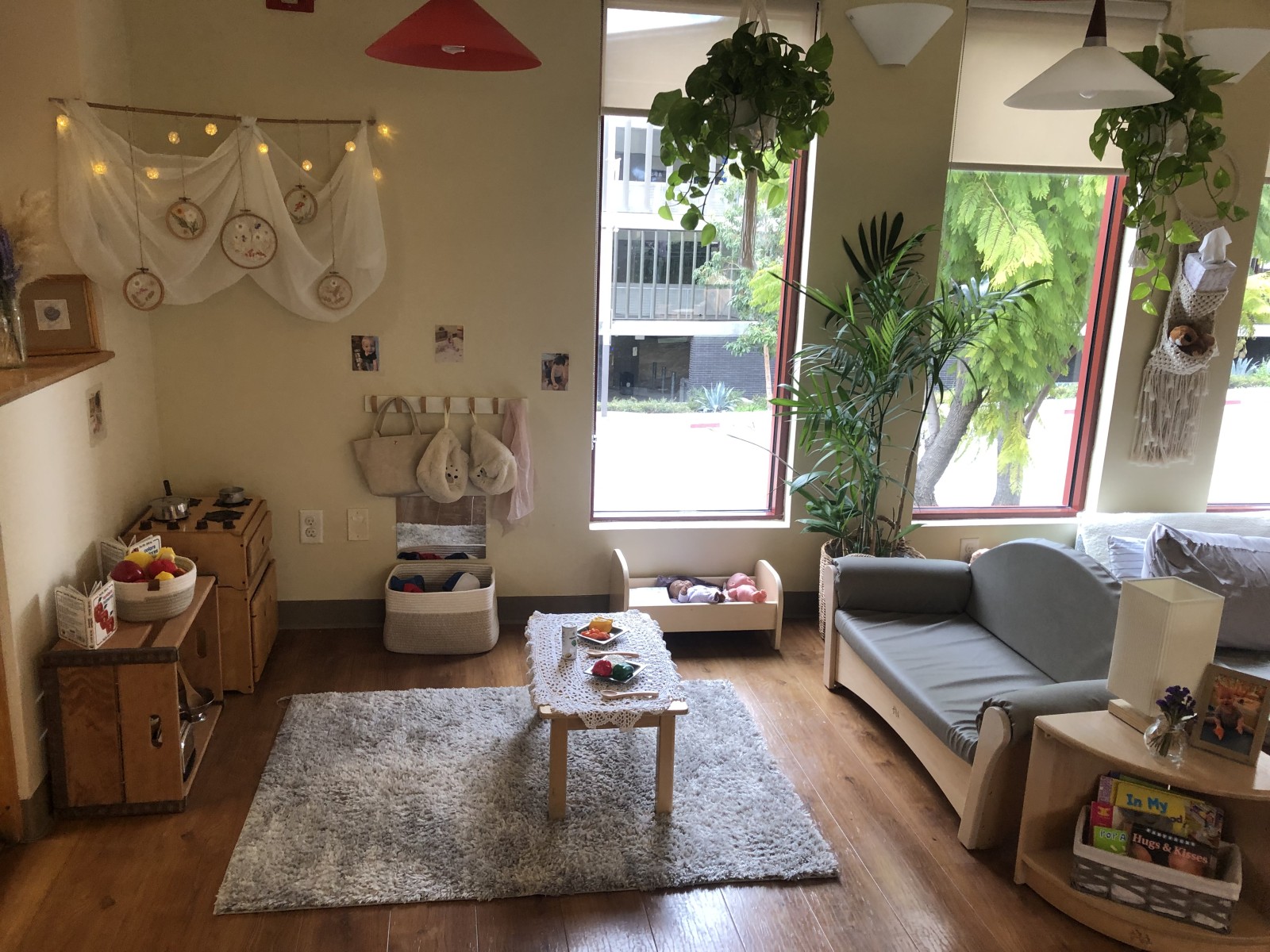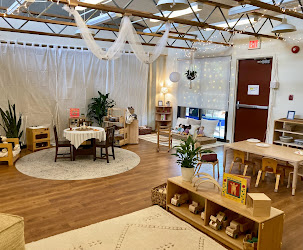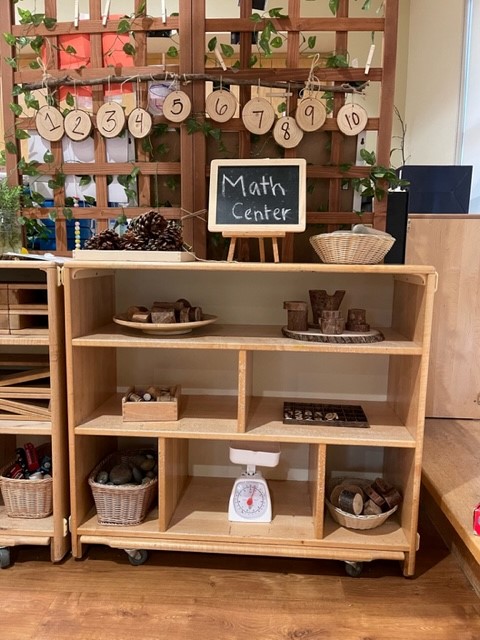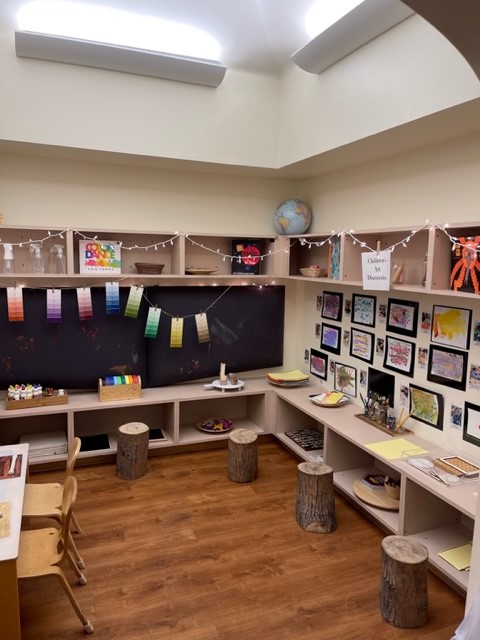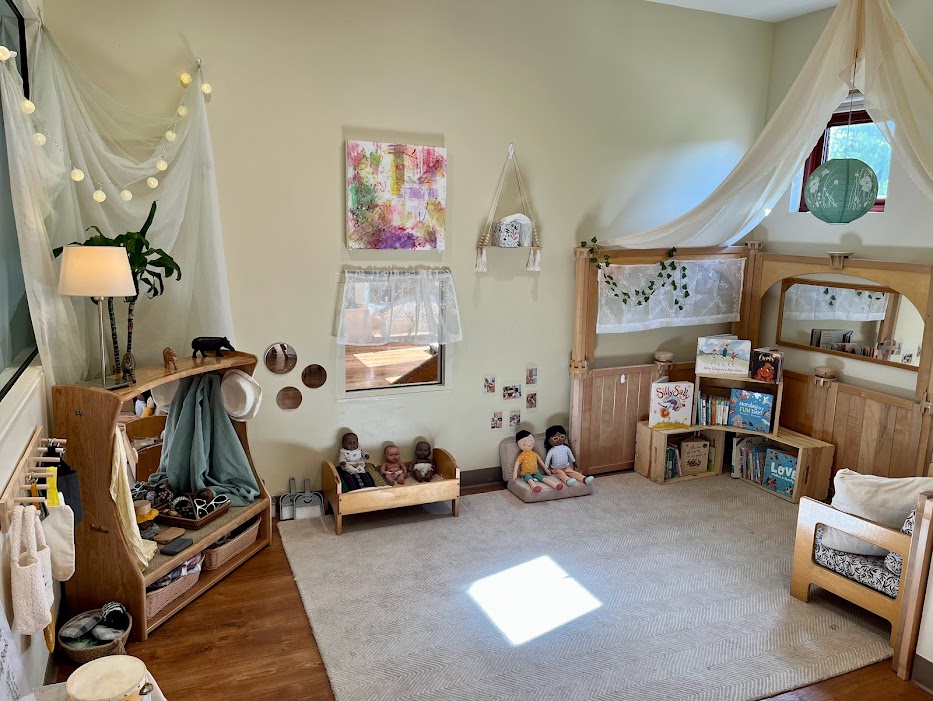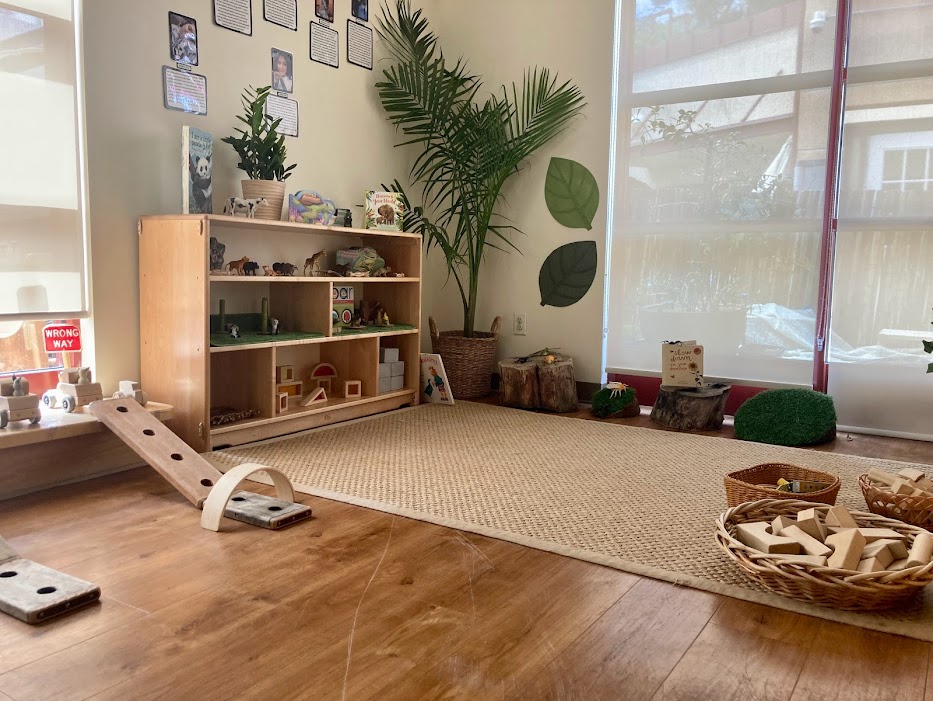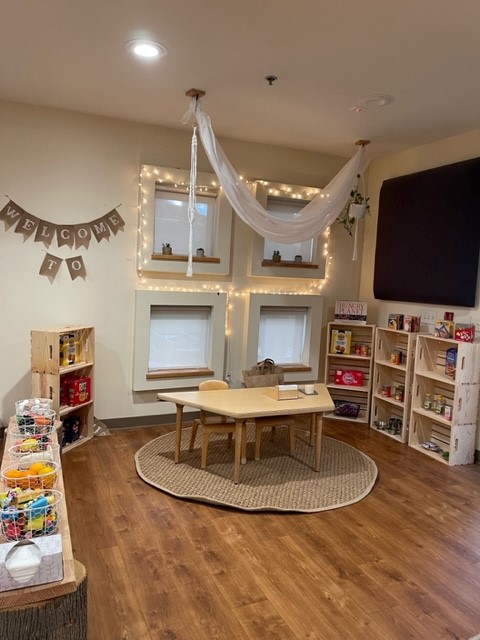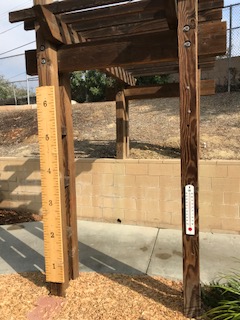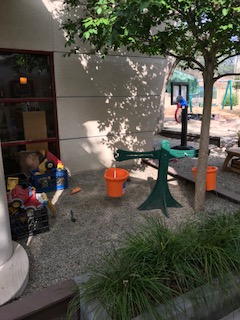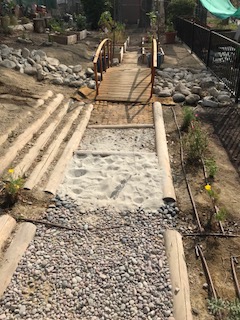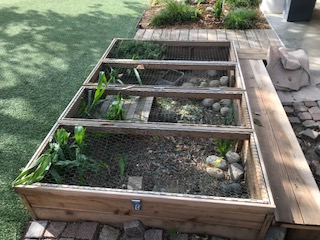Founded in 1968, the Anna Bing Arnold Children’s Center provides early care and education services for the Cal State L.A. campus community. The Center serves children from infancy through preschool, is accredited by the National Association for the Education of Young Children and is licensed by the California Department of Health and Social Services.
At the Anna Bing Arnold Children's Center, we strive to create a shared community where parents, teachers, and the campus join to provide children with the best. It is the mission of the Children's Center to provide enriched developmental childcare services for Cal State L.A. student-parents, faculty, staff, and the local community. The Center supports student-parents as they complete their education and offers reduced rates for Cal State L.A. students and tuition assistance for low-income families. The Children's Center is sponsored in part by grants from the Cal State L.A. Associated Students, Inc. (ASI), the California Department of Education and the U.S. Department of Education. The Center also offers a range of interdisciplinary opportunities for observation, fieldwork, and research for Cal State L.A. students and faculty.
Educator Tours (For teachers and/or program administrators only)
Our Center does offer educator tours for other ECE programs to find out more about our approach and program design. You will have the opportunity to visit classrooms as well as explore our natural outdoor environment. We will conclude your tour with a short presentation on how the Center plans and designs curriculum for the children using a constructivist, Reggio Emilia inspired lens. The tour and presentation will be conducted by a program administrator and/or the ABACC education specialist. You will receive a tour packet with ABACC program information as well as curriculum samples/documentation. Tours are generally offered twice per month on the following days/times:
Tuesdays, Wednesdays or Thursdays from 10:00 am - 12:00 pm; These days and times are subject to change based on program availability.
If interested in booking a tour, please e-mail program director, James Goodrich at [email protected]
Click here for more information on the Reggio Emilia Approach to education
For perspective parent tour information, please go to the admissions tab above
The program practices at the Children's Center are based on our beliefs about how children learn and should be treated, about the importance of families to a successful school environment, and about the role of teachers in making it all happen.
Central to our philosophy is our view of children as curious, competent and capable learners who are active participants in constructing their knowledge of the world.
We believe that each child is unique and deserves respect, consistency, caring, and challenge as they grow. Further, we believe that:
- Children develop at their own pace – they do not acquire knowledge by force. They are motivated by their own desire to make sense of their world.
- Children learn through interactions with others and through exploration of their environment. Play provides this interaction and exploration, and is the natural mode of learning for the young child.
- Children learn self discipline as they learn respect for themselves, others, and their environment. Pride in their abilities, family, and culture adds to their developing self esteem.
- Children need a balanced program which fosters independence, choice, and challenge. They also need structure and well defined limits in order to feel secure.
Young children's developmental tasks are to build trust, learn social skills, construct their knowledge of the physical and social world, and develop positive self esteem. These tasks are best supported by a program that provides developmentally appropriate activities, well trained and consistent staff, and a safe, healthy and challenging learning environment.
Thoughts On The Value of Play
Play is the highest expression of human development in childhood, for it alone is the free expression of what is in a child’s soul.
- Fredrick Froebel
Play is the business of young children. It is the primary vehicle through which they learn. Opportunity to play freely is vital to the child’s healthy development. Play fosters intellectual development and permits the child to assimilate reality in terms of his own interests and prior knowledge of the world. Through play children are free to experiment, try out possibilities and practice different roles. Play stimulates creativity. It is inherently a self-expressive activity that draws on the child’s imagination. Play further develops children’s language, physical and social development. Play is critical to all aspects of the child’s learning and is an essential part of our program. By being a careful observer of children’s play teachers have the opportunity to discover the child’s interests and abilities. Beyond all these valuable reasons to support play is the fact that it is highly enjoyable. Children who are deeply involved in play are working at all the appropriate tasks for their development while they are experiencing joy and emotional well being. What could be better?
|
Children's Curriculum |
|---|
Article: Emergent Curriculum for Infants and Toddlers |
The Children’s Center provides a nurturing environment that supports the developing child, emphasizes positive self-esteem, and teaches respect for individual differences. The program offers opportunities for active play, individual choice, and group activities that help children to develop feelings of competency and independence in a child-centered environment. Being part of a shared community is actively encouraged. Center teachers emphasize cooperation and create classroom groups that develop concern for each other as they problem-solve and work together.
Our classroom practices at the Center are based on our school philosophy, our beliefs about how children learn, and the role of teachers and families in creating a successful school environment. Central to our school philosophy is the belief that children are curious, competent, and capable learners who are active participants in constructing their knowledge of the world. Our curriculum has grown out of this philosophy and our ongoing study of which approaches provide the best for children. Our curriculum is based on the social constructivist theory that supports the idea that children learn through active interaction with the people and materials of their environment, and that they build upon their knowledge base as each new experience occurs. These interactions are reinforced through questioning, forming ideas, and testing information. The constructivist theory focuses on the interconnected needs of the whole child and provides a framework for an integrated curriculum. In the integrated curriculum, all major aspects of the child’s development are interrelated and are provided for throughout the day.
At the Children’s Center, we believe that children learn best when they are involved and interested in the topic. The best curriculum emerges from the child’s interest – it is not solely dictated by teacher interest. To strengthen the child’s construction of knowledge teachers support child-initiated engagement and experimentation with a variety of materials based on the child’s interest level and ability. Teachers plan curricula based on careful observation of what children are interested in and how best to extend their learning. Teachers build a curriculum that explores different topics in depth as children’s understanding of the topic grows. Teachers set up experiences for children that require questioning, investigation, and problem-solving. Children are encouraged to develop ideas over time, to deepen their understanding of the world by questioning, exploring, and representing ideas through various creative mediums. Teachers believe it is valuable for children to be able to generate their own ideas, figure out answers for themselves, and try out a variety of solutions until they find one that works. Teachers act as facilitators of this process, aiding children in their discoveries and providing a wealth of experiences to add to the child’s knowledge of the world.
The physical environment of the Center has been set up to enhance our program goals. It offers challenges and encourages independence. It offers avenues for cooperative play and involvement with varied materials. It is through intense interaction with the environment that children learn about the physical properties of the real world. It is also how they test ideas, sort out feelings, and learn competency all important aspects of good development.
Our Classroom Design
The learning centers in our classrooms allow child-initiated engagement in active, hands-on experiences. It is through experiences with developmentally appropriate materials, equipment, and interaction with the teachers that children feel free to explore and experiment. Each level of learning then provides a basis for making further connections across developmental domains. In order to support children with special needs we coordinate with parents and community services, and make reasonable adaptations to the physical environment and curriculum areas as needed by each individual child.
- The classroom equipment and materials are designed for open-ended, child-initiated exploration. This encourages the child to be creative, and inventive, and use communication and problem-solving skills.
- The classrooms are well organized to facilitate a natural flow of activity. The children are active participants in taking care of their environment. They learn essential life skills of being responsible for their environment by assisting in setting up materials and displays, as well as putting away materials/activities when they are through.
- Our classroom design is inspired by the Reggio Emilia Approach which is very welcoming and aesthetically pleasing, using natural materials and colors. Interest areas are intentional where materials are useful and are representative of the classroom community. The pictures below are taken from a mix of classrooms and age groups at our Center (spring 2023).
Below: Bonsai Infant Classroom View
Below: Bonsai Infant Classroom (Cozy Area/Reading)
Below: Magnolia 2's Preschool Classroom (Cozy Area/Reading)
Below: Birch Infant Classroom (Dramatic Play)
Below: Magnolia 2's Preschool Classroom View
Below: Eucalyptus Pre-K Classroom (Math Center)
Below: Eucalyptus Pre-K Classroom (Art Studio)
Below: Bamboo Toddler Classroom (Dramatic Play with Literacy/Reading Area)
Above: Bamboo Toddler Classroom (Block and Construction Area)
Eucalyptus Pre-K Classroom (Dramatic Play Store)
We view the outdoor environment as an outdoor classroom where children can explore freely. The outdoor areas offer covered patios for art and water play, as well as three playgrounds that offer age-appropriate challenges for each age group. The playgrounds include sand, water, bike paths, swings, climbing structures, and spaces for digging, exploration, running and playing games surrounded by trees and native plants. In bringing the indoor curriculum outside, we strive to provide children with opportunities to explore math, science, and literacy concepts through interaction with their environment.
Our Outdoor Classroom
Pictured below: The "Phun" Sensory Path and Children's Garden, Lower Yard Gravel Pit, Tortoise Enclosure and Outdoor Reading Area
Curricular Domains Supported: Math, Physical Science, Literacy, Earth and Life Sciences, Physical Development
Tortoise Enclosure
The strength of the Center comes from our dedicated teaching team. Their collective enthusiasm, knowledge, and work ethic are reflected in every aspect of our program.
Our staff is composed of experienced early childhood educators who are committed to the unique needs, care, and education of young children and their families.
- All Lead Teachers hold a B.A. or M.A. in Child Development/Early Education and a Master Teacher Child Development Permit granted by the State of California Commission on Teacher Credentialing.
- Assistant Teachers are students at Cal State L.A. who are majoring in Child Development or a related major. Student assistants have varying backgrounds; some are near completion of their degree program in child development and some have just begun their academic careers. The one factor all student assistants have in common is their desire to work with children and grow in their understanding of child development.
- Staff training and development is ongoing, as well as responsive to current research and innovative educational philosophies in early childhood education.
- In addition to our professional staff, student interns, who are completing their education in Child Development, are placed in each classroom. Student Interns add to the quality of our program as well as further lowering our teacher/child ratios.
Telephone: (323) 343-2470
ADMINISTRATIVE & MANAGEMENT TEAM
Center Director: James Goodrich, M.A. Early and Primary Education- 30+ Years in ECE
Office Manager: Diana Hechavarria, B.S. Business Administration; 40 years with ABACC
Infant/Toddler Program Coordinator: Katia Barone, M.S. Education Psychology- 15+ Years in ECE
Preschool Program Coordinator: Vanessa Perez, M.A. Early and Primary Education- 10+ Years in ECE
from NAEYC Accreditation: A Commitment to Excellence in Early Childhood Education
The National Association for the Education of Young Children, the world's largest organization of early childhood educators, established its accreditation system to raise the quality of early childhood education and help families and others identify high-quality child care centers, preschools, kindergartens, and other early childhood programs. NAEYC accredited programs are committed to providing high-quality educational services to young children and their families. While the accreditation process examines all aspects of a program including health and safety, teacher qualifications, and administration, the focus is on the quality of interactions between teachers and children and the nature of the child's experience. To earn accreditation, programs comply with national standards of quality that go well beyond state health and safety licensing requirements. The NAEYC accreditation criteria address all aspects of an early childhood education program, including the following.
- Teacher qualifications and development
- Teacher-to-child ratios
- Teacher/child and teacher/family relationships
- Curriculum
- Physical environment
- Health and Safety
A program begins the accreditation process with an extensive self-study to determine how closely it meets these criteria. After the program makes any necessary improvements, it is observed by early childhood professionals and then reviewed by a national commission of childcare and early education experts. Early childhood programs that substantially comply with the NAEYC guidelines are accredited for a five-year period.
Anna Bing Arnold Children’s Center has been met NAEYC accreditation standards and status since 1992.
NAEYC Accreditation Certificate 2027
For more information about program quality standards click on the link below:
NAEYC Program Standard Explained:

